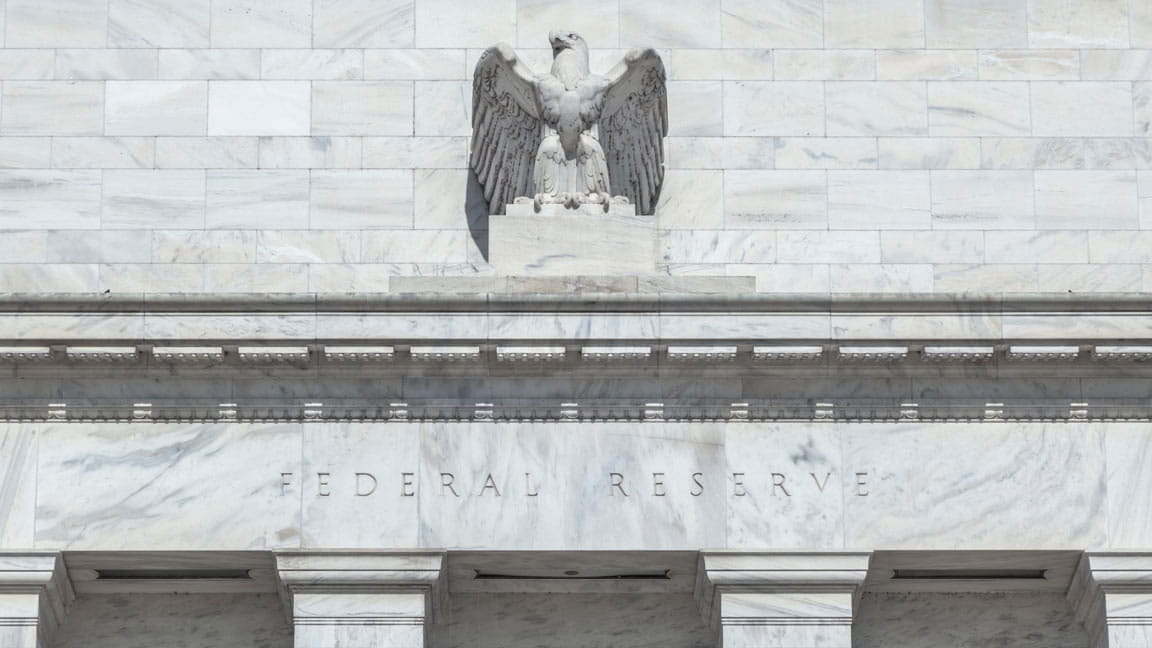Volatile markets and politics won’t change the Fed’s path

Summary
The strong economic foundation in the US continues to validate the Fed’s trajectory, despite the increased risk-aversion recently seen in the markets. As a result, we expect the FOMC to stay on its path, free from political pressure, and continue monetary-policy normalisation.
Key takeaways
|
At this stage, we do not expect the recent increase in risk-aversion and stockmarket volatility to deflect the US Federal Reserve from its path. The minutes of the Federal Open Market Committee’s 25-26 September meeting are particularly enlightening on this point. The Fed remains confident and optimistic about the growth prospects for the US economy – particularly the ability of most of the firms affected by tariffs to transfer those price increases to households.
The minutes also show that the last rate hike was unanimously passed, and that the majority of the committee members favoured going beyond the neutral rate – the interest-rate level that neither stimulates nor restrains economic growth. Estimates for the neutral rate currently range from 2.5% to 3%.
As a result, the message from the Fed is clear and the markets have understood it. As proof, the markets have not revised their rate-hike expectations and still anticipate three increases by the end of 2019. This view has taken root despite an increase in risk-aversion in the face of slower growth in China, fears about Brexit and Italy’s fiscal trajectory, geopolitical tensions and the rise of protectionism – all of which have contributed to high volatility in equity markets.
The Fed’s confidence is based on economic data that demonstrate the strength of economic activity in the United States.
- In the third quarter, the US economy grew at a 3.5% annual growth rate – a dip from the second quarter’s 4.2% rate, but still well above its potential.
- This growth was driven by consumer spending, which rose for the seventh consecutive month (at a 4% annualized rate) and was a direct consequence of President Donald Trump’s tax cuts.
- Core PCE – the inflation indicator favoured by the Fed, which measures personal consumption expenditures – remained stable at 2% for the fifth consecutive month. An increase in prices and wages are being offset by a slowdown in real-estate prices.
This convergence of economic activity clearly indicates a US economy that is rolling along and validates the Fed’s willingness to stop the monetary stimulus and go beyond the neutral rate.
As a result, we expect the FOMC to stay on its path, free from political pressure, and continue monetary-policy normalisation. We therefore expect a rate hike to be announced at the Fed's 18-19 December meeting, for a total of four increases in 2018. We also expect two further hikes in 2019.
It is important to note, however, that the Fed will not put its rate-hike plans on autopilot. The central bank wants to find room to manoeuvre in case the US economy reaches its inflexion point. But the FOMC will be pragmatic and keep an eye on the evolution of economic data, in total independence from political pressure.
Investing involves risk. The value of an investment and the income from it will fluctuate and investors may not get back the principal invested. Bond prices will normally decline as interest rates rise. The impact may be greater with longer-duration bonds. Past performance is not indicative of future performance. This is a marketing communication. It is for informational purposes only. This document does not constitute investment advice or a recommendation to buy, sell or hold any security and shall not be deemed an offer to sell or a solicitation of an offer to buy any security. The views and opinions expressed herein, which are subject to change without notice, are those of the issuer or its affiliated companies at the time of publication. Certain data used are derived from various sources believed to be reliable, but the accuracy or completeness of the data is not guaranteed and no liability is assumed for any direct or consequential losses arising from their use. The duplication, publication, extraction or transmission of the contents, irrespective of the form, is not permitted. This material has not been reviewed by any regulatory authorities. In mainland China, it is used only as supporting material to the offshore investment products offered by commercial banks under the Qualified Domestic Institutional Investors scheme pursuant to applicable rules and regulations. This document is being distributed by the following Allianz Global Investors companies: Allianz Global Investors U.S. LLC, an investment adviser registered with the U.S. Securities and Exchange Commission; Allianz Global Investors Distributors LLC, distributor registered with FINRA, is affiliated with Allianz Global Investors U.S. LLC; Allianz Global Investors GmbH, an investment company in Germany, authorized by the German Bundesanstalt für Finanzdienstleistungsaufsicht (BaFin); Allianz Global Investors (Schweiz) AG, licensed by FINMA (www.finma.ch) for distribution and by OAKBV (Oberaufsichtskommission berufliche Vorsorge) for asset management related to occupational pensions in Switzerland; Allianz Global Investors Asia Pacific Ltd., licensed by the Hong Kong Securities and Futures Commission; Allianz Global Investors Singapore Ltd., regulated by the Monetary Authority of Singapore [Company Registration No. 199907169Z]; Allianz Global Investors Japan Co., Ltd., registered in Japan as a Financial Instruments Business Operator [Registered No. The Director of Kanto Local Finance Bureau (Financial Instruments Business Operator), No. 424, Member of Japan Investment Advisers Association and Investment Trust Association, Japan]; and Allianz Global Investors Taiwan Ltd., licensed by Financial Supervisory Commission in Taiwan.
648999
About the author

Outlook & commentary
The unintended consequences of saving the world from the financial crisis

Summary
The response of central banks to the financial crisis 10 years ago may have saved the world from a devastating depression, but it also created a host of unforeseen effects – from more indebtedness to more economic inequality. Looking back at what we got right – and what went wrong – what lessons can we take away for the future?
Key takeaways
|






